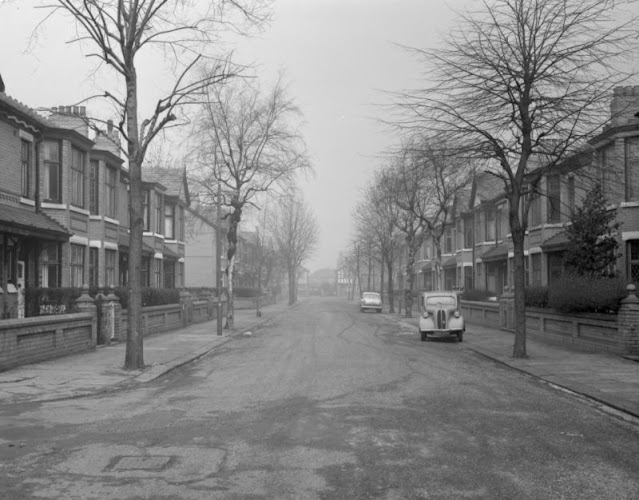These women were all training in various London polytechnics to work in munitions factories during the early 1940s.

 |
| A machine shop trainee at the Ministry of Labour training centre at Chelsea Polytechnic at work on a milling machine. |
Vintage Photos of Women Workers in the Factories in London During World War II
 |
| A trainee reads a micrometer at the Ministry of Labour training centre at Chelsea Polytechnic. |
Vintage Photos of Women Workers in the Factories in London During World War II
 |
| Mrs Hilda Woods of Whitton is ‘scribing’ (marking out lines) as part of her training at Chiswick Polytechnic. Before volunteering for war work, she was the manageress of a tobacconist’s shop. Her husband is in the navy and works as an artificer. |
Vintage Photos of Women Workers in the Factories in London During World War II
 |
| Mrs G Norris, from Richmond, works on a drilling machine at Chiswick Polytechnic. Her husband is in the Auxiliary Fire Service and they have two daughters, Marie (aged 11) and Eileen (aged 3 1/2). Before volunteering for war work, Mrs Norris was a window dresser. |
Vintage Photos of Women Workers in the Factories in London During World War II
 |
| Mrs G M Godwin (20) and Miss Grace Bridges (20) at work at Chiswick Polytechnic. They appear to be sharpening tools, with Mrs Godwin (from Feltham in Middlesex) holding a large chisel. Mrs Godwin’s husband is in the Army, and her hobbies are dancing, tennis and hiking. Before volunteering for war work, she was a filing clerk. Miss Bridges was a variety and cabaret dancer, and comes from a family of six. |
Vintage Photos of Women Workers in the Factories in London During World War II
 |
| Mr H A de Jong, the Chief Instructor of Chiswick Polytechnic at Turnham Green, delivers a lesson to a group of trainees. The trainees undertake an eight-week training course at Chiswick before transferring to one of the many factories across the country. |
Vintage Photos of Women Workers in the Factories in London During World War II
 |
| Mrs Elizabeth Henderson (originally from Gateshead) inspects the extension pistons of Bren guns at Chiswick Polytechnic. Her husband is in the Army. |
Vintage Photos of Women Workers in the Factories in London During World War II
 |
| Mary Devlin, aged 20, is originally from Ireland. Here she can be seen working on the manufacture of a Bren gun part at Chiswick Polytechnic. |
Vintage Photos of Women Workers in the Factories in London During World War II
 |
| Peggy Stevenson (aged 21) is inspecting gauges at Chiswick Polytechnic. Peggy is from Bansham and, in her spare time, likes walking, dancing and drawing. |
Vintage Photos of Women Workers in the Factories in London During World War II

|
| A trainee in the fitting shop of the Ministry of Labour training centre at Chelsea Polytechnic punches a hole into a bar of metal. |



